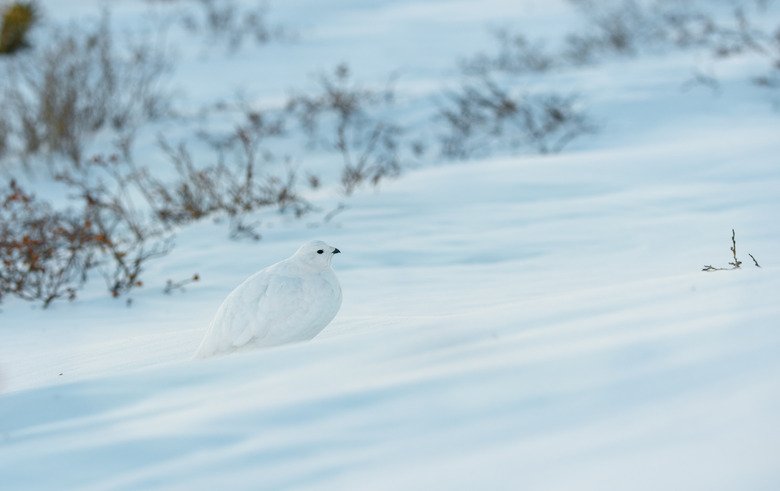What Continents Are In The Tundra?
Tundra comes from the Finnish word "tunturia," which translates as "a barren land." Areas considered tundra cover about 20% of the Earth's surface, most of them circumnavigating the North Pole. The soil is frozen from 10 inches to 3 feet underground, meaning very little vegetation can survive. In fact, the only plants that can survive are low-growing ones like mosses, heaths and lichen. In the winter the tundra is cold and dark, and in the summer, when the snow melts, it is transformed into a new landscape with bogs and marshes.
The Arctic Tundra
The Arctic Tundra
Almost all tundras are located in the Earth's northern hemisphere. Three continents have land that together is often referred to as the arctic tundra: North America, Europe and Asia. However, the latter two of these areas of tundra are often referred to as the Scandinavian and Russian tundras respectively. The North American tundra comprises land in Alaska, Canada and Greenland; the Scandinavian tundra in Norway and Sweden; and the Russian tundra in Russia.
The Antarctic Tundra
The Antarctic Tundra
Some land that resembles tundra does exist in Antarctica, but because it is much colder than the Arctic, the ground is always covered with snow and ice. This land therefore is sometimes not considered a true tundra, which is able to support limited vegetation.
The Alpine Tundra
The Alpine Tundra
Tundra located in mountainous regions is often referred to as alpine tundra. Alpine tundra shares several characteristics with arctic tundra, such as the types of vegetation (grasses, mosses and small trees), but its soil distinguishes it from the arctic tundra. In the alpine tundra, the soil is usually drained of ice and permafrost.
Tundra Climate and Effects of Global Warming
Tundra Climate and Effects of Global Warming
The arctic tundra is also a place with severe winds. Winds can blow between 30 and 60 miles per hour. Of the North American, Scandinavian and Russian tundras, the Scandinavian tundra is the warmest, with winter temperatures averaging 18 degrees Fahrenheit. The tundra is in many ways a cold desert, as precipitation (usually in the form of snow) only measures about 6 to 10 inches a year. Many scientists have observed a dangerous warming trend in recent years that is due to increased levels of carbon dioxide. Usually the tundra acts as a sort of protective "sink" in which plants growing during the summer trap carbon dioxide when they are later frozen in permafrost during the winter months. But because of global warming, fewer of the plants are frozen, and so the carbon dioxide is released back into the atmosphere.
Cite This Article
MLA
DiNero, Arlen. "What Continents Are In The Tundra?" sciencing.com, https://www.sciencing.com/continents-tundra-8348649/. 22 November 2019.
APA
DiNero, Arlen. (2019, November 22). What Continents Are In The Tundra?. sciencing.com. Retrieved from https://www.sciencing.com/continents-tundra-8348649/
Chicago
DiNero, Arlen. What Continents Are In The Tundra? last modified March 24, 2022. https://www.sciencing.com/continents-tundra-8348649/
